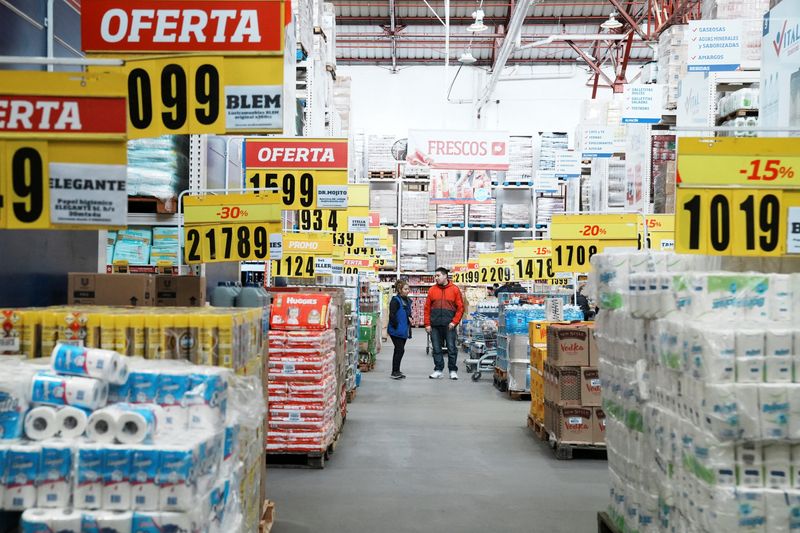Argentina continues to grapple with an overwhelming inflation crisis, currently the highest in the world, which although showing signs of deceleration, has not provided much respite for its citizens. While official reports indicate that inflation rates for September and October are stabilizing at around 3.5% month-to-month, the overall economic landscape remains dire for residents. The persistent rise in the costs of essential goods has outpaced stagnant wages, leaving many struggling to keep up with their daily expenses. University professor Daniel Vazquez encapsulated the sentiment felt by many when he stated, “We’re losing track of what’s expensive and what’s cheap,” highlighting the growing disparity between wages and living costs.
Analysts project that the full year inflation rate could average around 124% for 2024, a forecast that paints a grim picture for the Argentine economy. The triple-digit inflation rate reached an alarming 237% in August, underscoring the ongoing economic turmoil. This period of financial instability has also seen a significant reduction in state subsidies as libertarian President Javier Milei seeks to address what he perceives as an oversized public sector. The government’s austerity measures have meant steep cuts in funding for crucial sectors, affecting everything from energy to transportation and leaving many citizens feeling the strain.
Milei’s administration has adopted a stringent approach to managing the economy since assuming office in December, implementing a drastic devaluation of the local currency and advocating for public sector job reductions. This shift has particularly impacted informal workers, civil servants, pensioners, teachers, and healthcare professionals. The economic fallout from these measures has been sharp and immediate, with poverty rates soaring to an estimated 53%. This alarming statistic underscores the growing divide between the affluent and the impoverished in Argentina and raises significant questions about the long-term viability of such policy choices.
The rising costs of basic utilities have further exacerbated the situation for ordinary citizens. Computer programmer Ivan Cortesi noted significant increases in utility costs despite a relative stability in food prices, demonstrating the uneven nature of inflation’s impact on different facets of everyday life. Households that were once able to manage their budgets are now grappling with unexpected hikes in essential living costs, which poses a new layer of difficulty, particularly for the economically vulnerable. This inconsistent experience of inflation can leave individuals unsure of what to expect, further complicating their financial planning.
In the political arena, Milei’s administration has faced increasing pushback from various sectors of society, particularly in response to his controversial decisions, like vetoing a law designed to align university funding with inflation. The rejection of this measure has sparked widespread protests from students and academic personnel, illustrating the public’s growing discontent with austerity measures perceived as detrimental to education. The government remains firm on maintaining fiscal balance and fiscal prudence, but the localized fallout, particularly in educational and social sectors, may unsettle the broader public sentiment.
In conclusion, Argentina’s complex economic landscape, dominated by soaring inflation and austere measures, poses significant challenges for the everyday Argentine. The impact of President Milei’s policies has resulted in increased costs and a substantial rise in poverty, straining the populace’s ability to navigate their economic realities. While there are indications of moderating inflation rates, the broader context reveals an ongoing struggle against a backdrop of a decimated public sector and increasing social unrest. As citizens strive to adapt to these changes, the question remains whether the measures in place will ultimately stabilize the economy or further entrench cyclical poverty and inequality.

